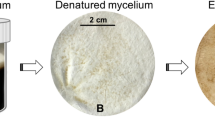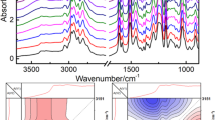Abstract
EPOXY RESINS are used extensively for protective coatings and in paints and adhesives; the consumption of epoxy resins during 1973 was 190,000 metric tons, which is an almost twofold increase over a period of 10 years1. About 90% of the epoxy resins used are manufactured by condensation of two molecules of epichlorhydrin with one or more molecules of bisphenol A (2,2-bis (4-hydroxyphenyl)-propane). The mutagenic action of simple epoxides such as ethylenoxide and epichlorhydrin was first shown in fruit flies2 and has subsequently been demonstrated in a wide range of organisms. Epoxy resins are diepoxides and bifunctional alkylating agents, and bifunctional alkylating epoxides are known to be mutagenic3,4. Mutagens are suspected of having a carcinogenic effect because of the relationship between carcinogenicity and mutagenicity5 and most diepoxides are carcinogenic in mice and rats6. We report here that aromatic epoxy resins are mutagenic in Salmonella typhimurium, and may thus represent a cancer risk in man.
This is a preview of subscription content, access via your institution
Access options
Subscribe to this journal
Receive 51 print issues and online access
$199.00 per year
only $3.90 per issue
Buy this article
- Purchase on Springer Link
- Instant access to full article PDF
Prices may be subject to local taxes which are calculated during checkout
Similar content being viewed by others
References
Sorin, B. in Heatlh Hazards from Epoxy (eds Ehrner-Samuel, H. & Sjöholm, O.) 6–10 (Arbetarskyddsstyrelsen, Stockholm, 1974).
Rapoport, I. A. Dokl. Akad. Nauk SSSR 60, 469–472 (1948).
Sram, R. J., Cerna, M. & Kucerova, M. Biol. Zbl. 95, 451–462 (1976).
McCann, J., Choi, E., Yamasaki, E. & Ames, B. N. Proc. natn. Acad. Sci. U.S.A. 72, 5135–5139 (1975).
McCann, J. & Ames, B. N. Proc. natn. Acad. Sci. U.S.A. 73, 950–954 (1976).
Van Duuren, B. L. Ann. N. Y. Acad. Sci. 163, 633–651 (1969).
Ames, B. N., McCann, J. & Yamasaki, E. Mutat. Res. 31, 347–364 (1975).
James, M. O., Fouts, J. R. & Bend, J. R. Biochem. Pharmac. 25, 187–193 (1976).
Milvy, P. & Garro, A. J. Mutat. Res. 40, 15–18 (1976).
Bresnich, E. in In Vitro Metabolic Activation in Mutagenesis Testing (eds de Serres, F. J., Fouts, J. R., Bend, J. R. & Philpot, R. M.) 91–105 (North-Holland, Amsterdam, 1976).
Wood, A. in In Vitro Metabolic Activation in Mutagenesis (eds de Serres, F. J., Fouts, J. R., Bend, J. R. & Philpot, R. M.) 179–197 (North-Holland, Amsterdam, 1976).
Cornish, H. H. & Block, W. D. A.M.A. Archs ind. Hlth 20, 44/390–52/398 (1959).
Kotin, P. & Falk, H. L. Radiat. Res. Suppl. 3, 193–211 (1963).
Weil, C. S., Condra, N., Haun, C. & Striegel, J. A. Am. ind. Hyg. Ass. J. 24, 305–325 (1963).
Hine, C. H., Guzman, R. J., Coursey, M. M., Wellington, J. S. & Anderson, H. H. Cancer Res. 18, 20–26 (1958).
Higginson, J. Proc. Eur. Soc. Toxic. 17, 104–112 (1976).
Author information
Authors and Affiliations
Rights and permissions
About this article
Cite this article
ANDERSEN, M., KIEL, P., LARSEN, H. et al. Mutagenic action of aromatic epoxy resins. Nature 276, 391–392 (1978). https://doi.org/10.1038/276391a0
Received:
Accepted:
Issue Date:
DOI: https://doi.org/10.1038/276391a0
This article is cited by
-
Titanocene / cyclodextrin supramolecular systems: a theoretical approach
Chemistry Central Journal (2012)
-
Investigation of a Biocompatible Polyurethane-Based Isotropically Conductive Adhesive for UHF RFID Tag Antennas
Journal of Electronic Materials (2011)
-
An in vivo assessment of the genotoxic potential of bisphenol A and 4-tert-octylphenol in rats
Archives of Toxicology (2011)
-
Evaluation of the mutagenic potential of root canal sealers using the salmonella/microsome assay
Journal of Materials Science: Materials in Medicine (1991)
-
Comparison of alkylation rates and mutagenicity of directly acting industrial and laboratory chemicals
Archiv f�r Toxikologie (1980)
Comments
By submitting a comment you agree to abide by our Terms and Community Guidelines. If you find something abusive or that does not comply with our terms or guidelines please flag it as inappropriate.



